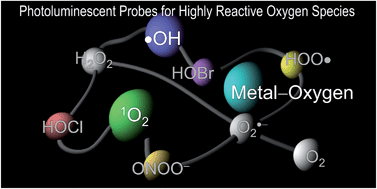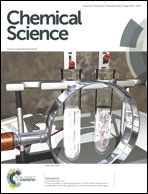Designing photoluminescent molecular probes for singlet oxygen, hydroxyl radical, and iron–oxygen species
Abstract
Metabolism of molecular oxygen in the human body inevitably produces reactive oxygen species (ROS). Among the family of ROS, those exhibiting very high reactivities, including ˙OH, ˙OOH, ONOO−, HOCl, HOBr, and 1O2, remain relatively underexplored. While emerging evidence suggests that these ROS are critically involved in physiological function as well as the genesis and development of diseases, the scarcity of the knowledge about these species hampers full understanding of the pathophysiology caused by the oxidative metabolism. To unveil the molecular mechanisms of the ROS, photoluminescent probes capable of reporting identity, concentration, and trafficking of the individual class of the ROS are in great demand. In this Perspective, we focus on 1O2 and ˙OH and summarize the known principles for designing photoluminescent molecular probes for these species. Special emphasis is placed on molecular design to selectively detect 1O2 and ˙OH. Disadvantages and limitations of using the established probes for detection of biological 1O2 and ˙OH are discussed as well. Finally, we address the importance of metal–oxygen species, such as iron–oxygen complexes of peroxo, superoxo, and oxo ligands, in oxidative processes and modulation of ROS. Despite the fact that the very high reactivity of the metal–oxygen species is recognized to be a key factor in many oxidative metabolic pathways, strategies for rational design of photoluminescent probes for detection of these species have yet to be established. As an initial step, we summarize the reactivities of the iron–oxygen species and propose potential approaches for creation of fluorescent molecular probes in the future. The principles provided in this Perspective will be helpful for designing photoluminescent ROS probes capable of applications in the biological milieu.


 Please wait while we load your content...
Please wait while we load your content...